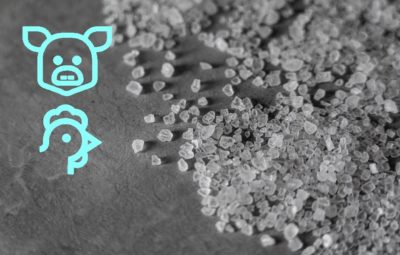The importance of electrolyte balance in animal nutrition

Dear colleagues,
Since maintaining acid-base balance is essential for life, there are different homeostatic mechanisms that act to ensure its constancy, such as the endogenous buffer system based on phosphates, bicarbonates, and proteins; the respiratory system, which is key to the elimination of CO2; and the excretory (renal) system, which modulates the excretion of electrolytes, bicarbonate, phosphate, and acids.
The three main fluid compartments in the body are the intracellular, interstitial, and plasma compartments, where acid-base balance occurs:
- The intracellular environment is based on a relationship between the cationic strength of K and Mg and the anionic strength of phosphates, sulfates, and proteins.
- The interstitial extracellular fluid is based on a relationship between the cationic strength of Na and the anionic strength of carbonates and Cl.
- And the plasma, where there is a balance between the cationic force of Na and the cationic force of carbonates, proteins, and Cl.
Diet can have a direct impact on acid-base balance, either because it contains acids or potentially acidic substances, or because of the buffering capacity it provides. The most common way to estimate the buffering capacity of a diet is to calculate its electrolyte balance.
The most commonly used formula for measuring electrolyte balance takes into account Na, K, and Cl:
Electrolyte balance (mEq/kg) = (Na/23 + K/39 – Cl/35.5) x 1000.
Although there are more precise formulas, which are necessary in cases where, for example, ingredients rich in inorganic sulfur such as whey are used:
dUA (Patience, 1990) (mEq/kg) = (Na/23 + K/39 + 2xCa/12 + 2xMg/24.3 – Cl/35.5 – 1.8xP/31 – 2xS/32) x 1000.
The lower the value, the more acidogenic the diet is, and vice versa, the higher the value, the more alkalogenic it is.
Recommendations for optimal electrolyte balance in poultry and swine diets are typically between 200-250 mEq/kg.
Although the metabolic status of our animals must always be assessed, for example, it is beneficial to increase the electrolyte balance value >250 mEq in birds suffering from excessive heat in order to control respiratory alkalosis caused by CO2 loss with carbonate, or to reduce the electrolyte balance <200 mEq in weaned piglets where their digestive tract acidification capacity is limited. in laying hens, it is important to adjust the electrolyte balance very carefully to ensure proper calcium mobilization.
We would also like to point out that the current trend toward reducing the percentage of protein in diets, for economic reasons, formulation accuracy, intestinal health, or environmental reasons, also causes the electrolyte balance to decrease, even though the formulas commonly used do not take this into account.
Finally, we are pleased to share with you this week an interesting article that evaluates how electrolyte balance affects piglets.
Enjoy the article!

